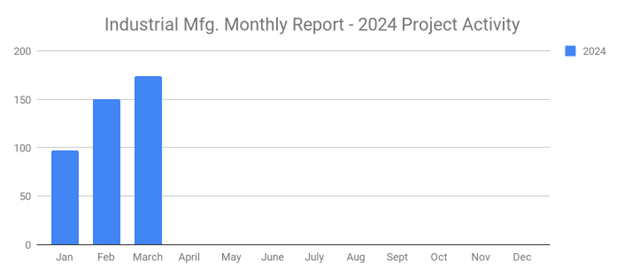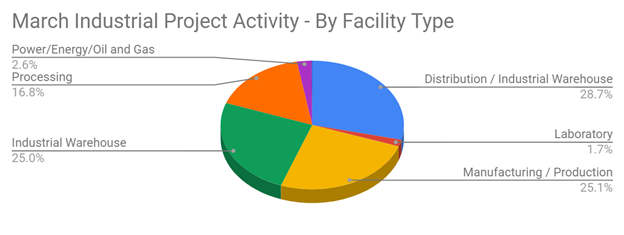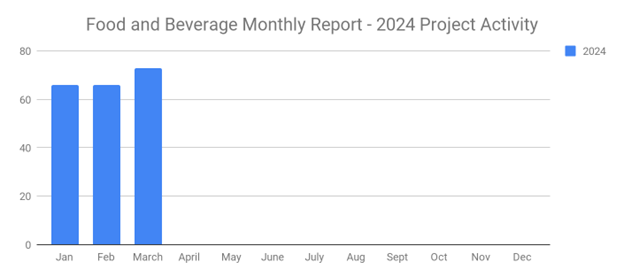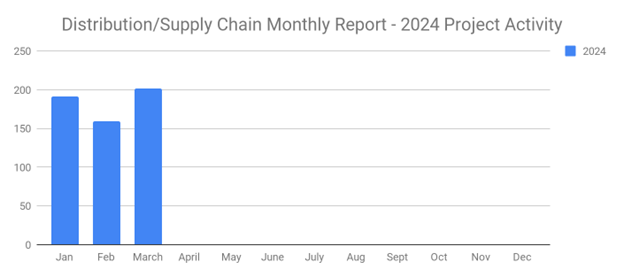-
Posted On Thursday, May 17, 2018 by SalesLeads Inc.

Tracking the right metrics can provide B2B marketers with invaluable insight into their marketing strategy, revealing what works and what doesn't. With this information in hand, B2B marketers can optimize their approach for a higher return on investment (ROI). Not all metrics are made equal, however. And it's important that B2B marketers track the right metrics to take full advantage of this insight. Here are eight important metrics that all B2B marketers should track.
#1) Average Purchase Amount
Tracking the average purchase amount allows you to determine how much customers are willing to spend on average. You should optimize your marketing campaigns to achieve a higher average purchase amount. The more money customers spend on your products or services, the more revenue you'll generate. If customers begin spending less per purchase, it usually signals an underlying problem with your marketing strategy that must be addressed. Maybe you are targeting the wrong prospects, or perhaps you're promoting them on the wrong channels.
One way to ensure you are targeting large enough prospects is to utilize SalesLeads’ Office Project leads or Industrial Project leads. The notes contained in each of the project leads will give you detailed information so you can determine where your product or service fits and the potential size of the sale. These project leads will help you to scale your marketing efforts upward so you can target and deliver larger opportunities to sales.
#2) Average Customer LTV
The marketing experts at Kissmetrics explain that the Lifetime Value (LTV) of a customer refers to the expected revenue a customer will generate for as long as he or she stays with the respective company. Like average purchase amount, you should strive to increase your company's average customer LTV. Unfortunately, it's nearly impossible to determine exactly how much a customer will spend over the course of his or her lifetime, but you can analyze historic data to make accurate projections of future spending.
Take a look at the size of the customer as well and try to determine if larger size companies, or companies with multiple locations can make a difference. To find these types of companies try utilizing SalesLeads’ Target Account Intelligence database. It will streamline your efforts.
#3) Customer Retention Rate
Although there are a few exceptions, it's almost always cheaper to sell to existing customers than new customers. Therefore, you should track your company's customer retention rate. Expressed as a percentage, this metric reveals how many customers stay with your company for a specified period of time. A high customer retention rate means customers like your product or service, so they continue doing business with you. If it's low, however, it means customers are leaving your business and choosing a different company's product or service instead.
#4) Number of Leads
One of the most basic, yet also one of the most important, B2B marketing metrics to track is lead quantity. High-quality leads are the driving force behind every successful B2B company. Without leads, you'll be forced to promote your product or service to a generic audience, which usually results in a lower conversion rate. Explore a variety of lead-generation channels -- email, cold calling, direct mail, SEO, PPC, retargeting, trade events, speaking engagements etc. -- to increase the number of leads, and quality leads that your company generates.
#5) Average Length of Sales Cycle
The average length of sales cycle refers to the average amount of time that it takes to sell a product or service to a prospect, from the moment you first make contact with the prospect to the time that he or she makes a purchase. The average length of sales cycle can vary drastically from one company to another. With that said, it's not uncommon for enterprise B2B companies to have a sales cycle of six to nine months, whereas mid-market B2B companies have an average sales cycle of just four to six months. Small businesses traditionally have the shortest sales cycle, often funneling prospects through the cycle within just one to two months. However, depending on what you offer, the length of time can be longer.
#6) New vs Returning Customers
Pay attention to the number of new customers your business acquires versus the number of returning customers. As previously mentioned, it's cheaper to sell to existing customers, so you should try to maintain a relatively high number of returning customers vs new customers. Some B2B companies may experience a 3-to-1 ratio of returning vs existing customers, meaning for every new customer a company acquires, it sells products or services to three existing customers.
#7) Number of SALs
Sales-accepted leads (SALs) are critically important to a B2B company's operations. Basically, these are high-quality leads that have already been reviewed by the marketing team and passed down to the sales team to begin the sales process. Because they've been "vetted," SALs are more likely to yield a sale. All B2B marketers should keep track of their SALs, striving to increase the number of SALs they generate.
One of the best ways to increase your SAL number is by purchasing office and/or industrial identified projects. SalesLeads does all of the work to uncover projects and calls to verify the details of what the projects are all about. We even verify the contact name(s), phone numbers and email addresses. Now you’ll have identified projects with verified names ready to give to sales to work on.
#8) Conversion Rate
Finally, you should track the conversion rate of each marketing channel on which you promote your company's products or services. Conversion rate is defined as the percentage of prospects who buy your product or service. If you sent a marketing email to 1,000 prospects and 100 buy the advertised product or service, your conversion rate for that email is 10%. Conversion rate is arguably the single most important metric to track, because it reflects the percentage of prospects who buy your product or service versus those who see it.
Tracking these metrics will provide you with invaluable insight into your B2B marketing strategy. Increase quality leads with our identified projects for industrial and office. Get a sampling and try it for free!
What to learn more? Get in Touch
Latest Posts
-

Q1 2024 Ends on a Strong Note with March Producing 174 New Industrial Manufacturing Planned Projects
-

Q1 2024 Ends on a Strong Note with March Producing 174 New Industrial Manufacturing Planned Projects
-

Q1 Brings Strength to the Food and Beverage Industry with 73 New Planned Industrial Project for March 2024
-

Q1 Rebounds with 202 New Distribution and Supply Chain Planned Industrial Projects in March 2024
